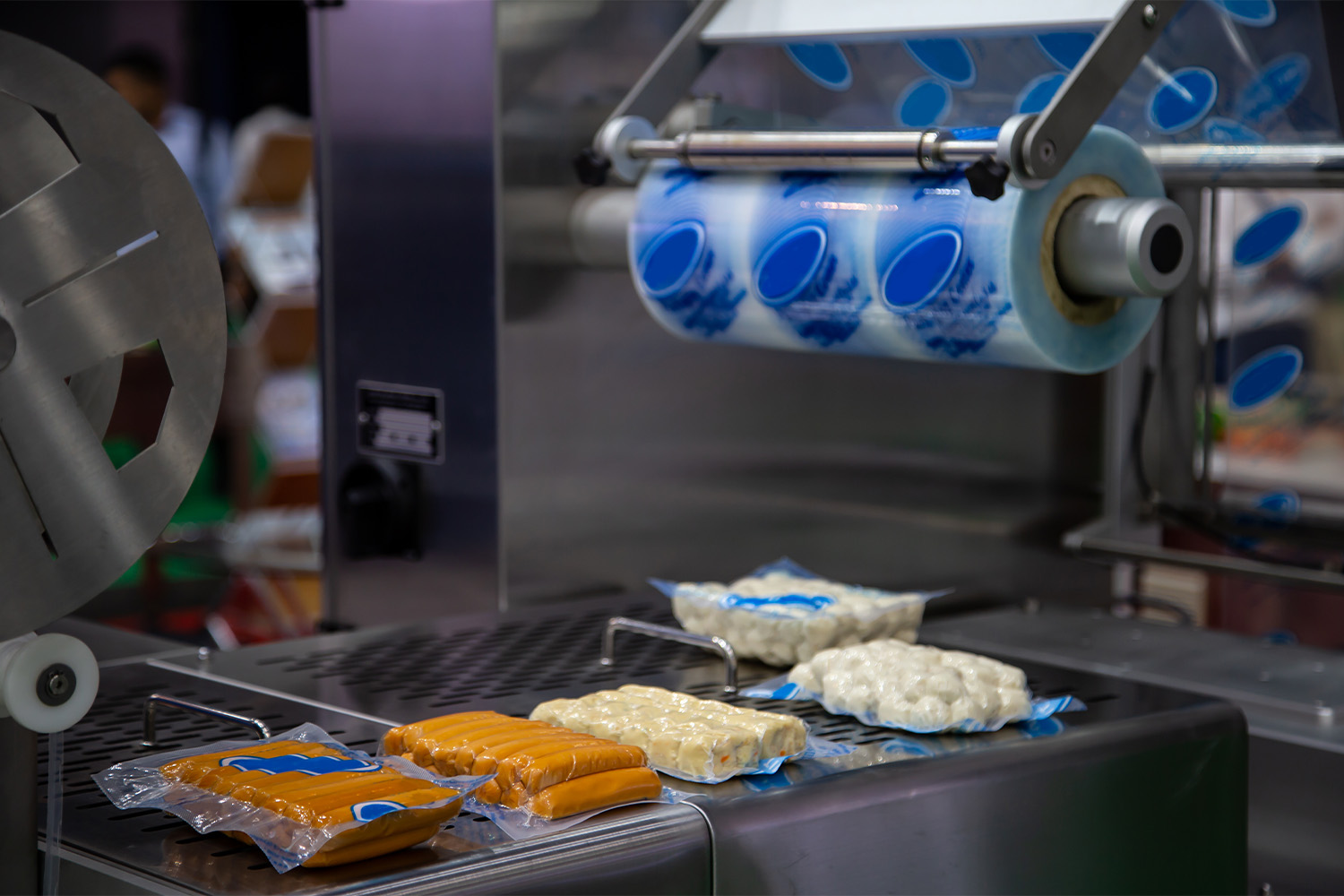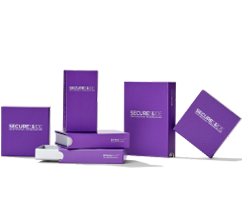
Food Preservation: The Right Way To Package for Longer Shelf Life
The packaged food industry has never been bigger, and brands must use every competitive advantage to stand out in the eyes of retailers and consumers. Quality is king, but other factors are at play as well, including longevity, freshness, and shelf life.
Therefore, many brands in search of an edge are now focusing on food preservation methods. It has never been more critical for food brands to use the right materials and processes to make goods last longer and maintain a high degree of quality.
With the help of centuries of technology and refinement, packaging methods are better than ever — but brands must still make deliberate and sound choices to get the most benefits.
Let’s talk about food preservation, why it matters, and the right way to package your goods for longer shelf life and better business results.
Why Is Food Preservation Important?
The fundamentals of food preservation start with the safety and well-being of consumers. Preservation methods and technologies have always been at the forefront of the packaged goods space, protecting buyers from potential hazards and health concerns of food spoilage.
Until recently, foodborne illness was not uncommon. Fortunately, food safety standards have risen dramatically in recent decades.
Still, the occasional incident reminds us that even modern techniques are not 100 percent foolproof. Bacteria can grow fast under the radar, especially among perishable goods and packages with high moisture content.
Food preservation is more than just a matter of upholding trust with retailers and consumers. It’s also an ethical matter since consumables should be safe to eat, as well as provide accurate expiration dates and other key information for shoppers.
Finally, proper food packaging and preservation is simply smart business, whether you’re shipping out chicken tenders, specialty spices, or breakfast cereals. Retailers are more likely to purchase wholesale orders of goods that last longer in storage or on shelves, and customers appreciate the extra time to enjoy these products at home.
In short, the more buyers can trust your brand as a consistent source of safe, high-quality, and long-lasting goods, the better it is for the future success of your business.
Five Packaging Methods of Food Preservation
The importance of food preservation should be clear enough, but what practical packaging methods can increase the shelf life of your best-selling products? You don’t have to resort to freeze-drying and food dehydrators for all your goods — here are a few efficient packaging methods to prevent the growth of microorganisms.
1. Modified Atmosphere Packaging (MAP)
With uses ranging from your favorite proteins and produce to various sweet and salty snacks, modified atmosphere packaging is a popular and effective method of preservation.
The process works by displacing the air around a product and manipulating gases to achieve better conditions for preservation.
With the addition of strong barrier materials to lock in this atmospheric change, products can last longer, look better on display, and prevent issues like oxidation or microbial growth in the package.
As these methods advance and become more widespread, expect to see longer shelf lives and a broader range of MAP packaging types.
2. Vacuum Packaging
A simpler dry-good packaging method is achieved through a vacuum process, whereby air is removed from the product’s bag or container before being sealed shut.
Vacuum packaging is more cost-efficient and manageable at scale. Plus, it can reduce the biggest concerns of oxidation, microbial growth, and various molds.
With the absence of air in the package, there are fewer chances for an unexpected chemical reaction to disrupt the internal environment, protecting products for longer.
However, these benefits are not guaranteed to carry over once the product seal is broken, meaning that brands should include resealable mechanisms wherever possible. Keep in mind that vacuum food preservation techniques are not meant for products with high moisture content, so applications may be limited.
3. Barrier Packaging
Perhaps the broadest category of packaging methods is known as barrier packaging. This encompasses the standard and basic forms of protection used to protect goods from exterior contaminants.
This includes the usual array of wrappers, bags, paperboard boxes, plastic containers, sleeves, tins, pouches, and any other format relying strictly on the barrier properties and structure of the package itself.
Simplicity is part of the winning formula for these types of barrier packages, as costly processes like MAP or vacuum sealing are not required. However, products that use this type of packaging are more prone to environmental factors like temperature swings, oxygen exposure, water vapor, and other issues during shipping, storage, and point of sale.
The good news is that barrier packaging has come a long way in a short time, and some of the top solutions in the industry still follow this familiar format.
4. Freezing
Known as one of nature’s best food preservation techniques, freezing is predictable and reliable, optimizing flavor and nutrition by “locking them in” at their peak.
Essentially, this just means that the process halts bacteria growth and enzyme activity, which can prevent the food from breaking down. This is true for vegetables, proteins, and even prepared foods like microwavable meals, snacks, desserts, and more.
The freezing process is relatively easy to perform on the part of the manufacturer. Although, some challenges may arise with long-range shipping, especially as the product inches closer to room temperature.
However, once the product reaches its final storage destination, warehouses and retailers can hold inventory for months or even years at a time without concern of expiration. The only limitation to this method of food processing is that your customer base must have access to low temperatures for long-term storage.
Foods that can be frozen include:
- Baked goods
- Meats
- Vegetables
- Fresh fruits
From a consumer standpoint, frozen foods are also highly trusted and convenient for everyday use. With a combination of freezing and basic barrier packaging, food brands can create winning products without complex or costly methods.
5. Canning
People have been pickling, fermenting, and home canning to preserve food for ages. The benefits of canning include preservation, safety, and convenience.
The canning process is typically automated in an industrial environment, with high-quality standards to ensure food is clean, safe, and sealed for long-term food storage.
Typically, low-acid foods like are the best candidates for pressure canning. This is a canning process that uses a pressure canner, boiling water, and high temperatures to prevent bacteria growth.
Products that can be canned include:
- Jams and jellies
- Sauerkraut
- Soups
- Kimchi
- Dry foods such as grains and cereals.
Modern cans are lightweight, cost-efficient, and do not rust, making them ideal for achieving larger profit margins and business expansion. Certain products can also be vacuum-packed in aluminum cans, adding another layer of protection and longevity when preserving food.
While canning has long been associated with concerns like botulism, modern canning practices such as water bath canning and pressure canning have improved immensely over the years. Today, botulism is extremely rare and mainly found in faulty home-canned goods.
Not all products must be canned in aluminum tins, of course. Glass containers and plastic bottles remain popular alternatives and follow a similar packaging process.
How Do You Choose the Right Packaging?
When packaging goods, brands should weigh the pros and cons of every available option, picking the best one for shelf life, cost efficiency, retail appeal, and overall product quality.
Here are three major factors to consider when choosing the right packaging solution for food products across the board.
What Is the Spoilage Risk of Your Products?
Eeach type of food has a unique spoilage risk profile, and this should guide your packaging choice from the start. Highly perishable meats, veggies, and fruits must be refrigerated and protected against microbes of all kinds, while dry goods are less susceptible to hazardous bacteria and other issues.
List the top concerns that face your food product throughout the supply chain, and build your packaging plan to address each one in order or importance. This can help maximize shelf life and reduce wasted materials.
What Are the Customer’s Needs?
Depending on your target audience and their expectations, packaging methods will vary based on the look, feel, presentation, and protective properties. Products marketed to young adults, for instance, may feature more colorful and eye-catching formats and labels, while luxury goods can benefit from a minimalistic approach.
Anticipating customer needs and aligning your product with a brand vision is key to success in any field, food included.
What Is the Cost?
Make your packaging plan cost-effective by only using the materials and processes required to meet key specifications. Wheat crackers, for instance, do not require vacuum sealing or advanced MAP methods, whereas high-grade caviar demands the best refrigeration and preservation available.
The decision ultimately comes down to a cost-benefit analysis that keeps profit margins high while satisfying customers — and keeping everyone safe in the process.
How Does Dymapak Prolong Shelf Life?
Dymapak has been a leader in barrier packaging technology for years, delivering quality bags, pouches, tins, and other in-demand products to brands everywhere. Here’s how Dymapak goes above and beyond to keep your food products fresh for longer.
Mylar Bags
Mylar is a highly flexible yet durable material with excellent barrier properties for food preservation. Dymapak uses Mylar to manufacture its best-selling SecureSack child-resistant bags, with a full range of customization and labeling options.
Polyethylene (PE) Poly Bags
Polyethylene is known for its versatility and sustainable properties, making it ideal for an environmentally sound business plan. Our Dymapak SecureSack Eco is a flagship PE product that brands trust to protect their products and meet eco-conscious consumer demands.
From cannabis edibles to dry goods and more, the SecureSack Eco is a step forward for the food industry, as sustainability matters more than ever.
The Bottom Line
The basics of food preservation are well understood, but applying these principles to packaging isn’t always easy. For brands looking to excel in competitive markets, packaging decisions should be well-informed and executed to perfection.
This guide can help give your brand the knowledge base to make the right calls for safe, long-lasting food packaging solutions. With an attractive brand, a winning product, and safe packaging combined, there’s no limit to what your business can achieve.
Sources:
From Appert to the Ball Brothers: a history of canning | Food Ingredient Facts


